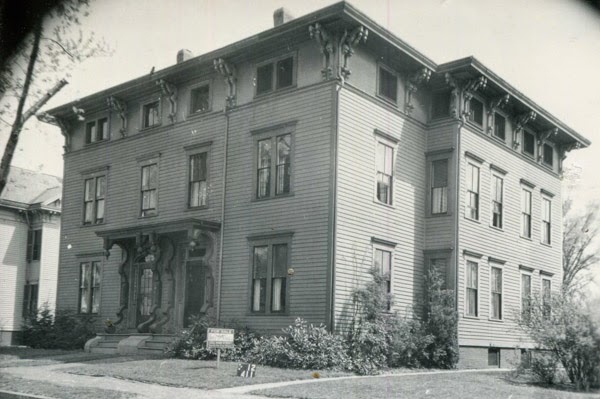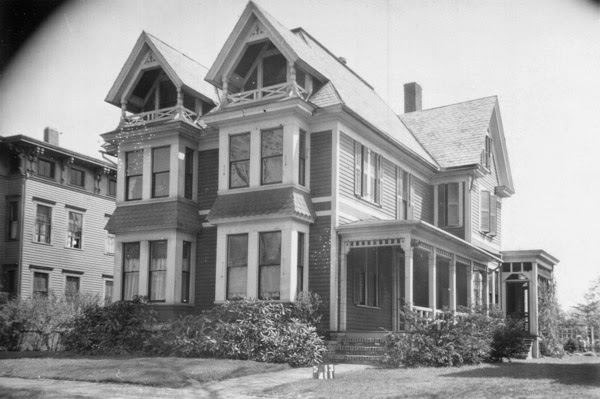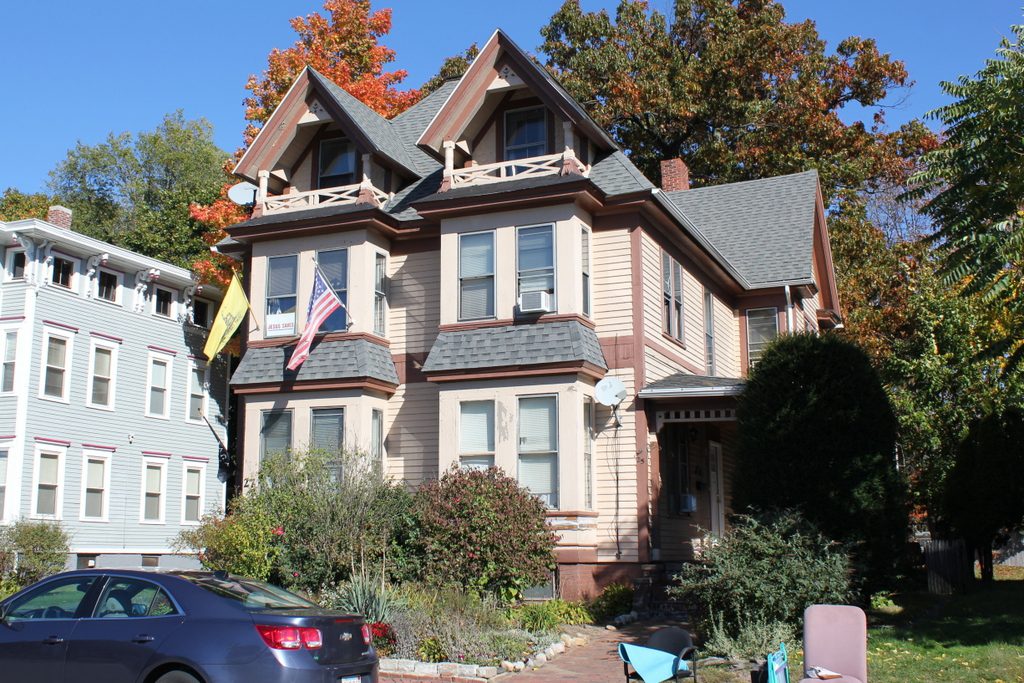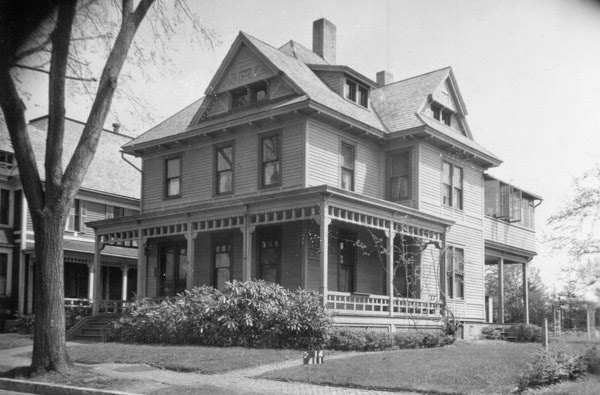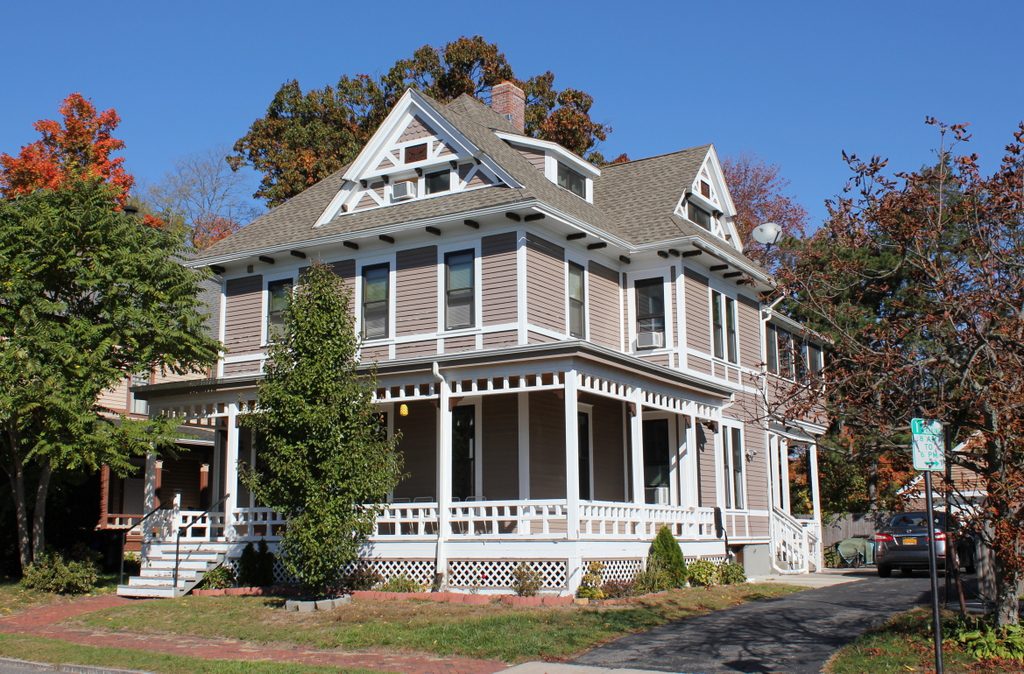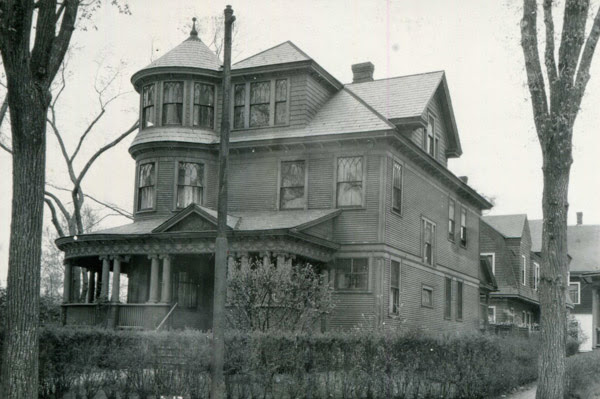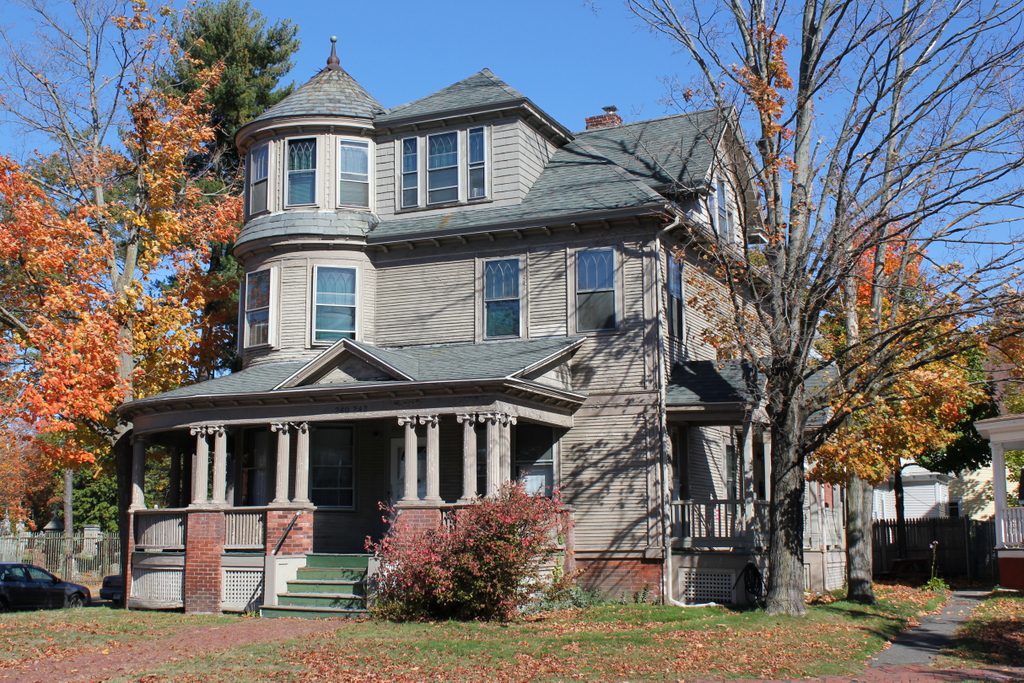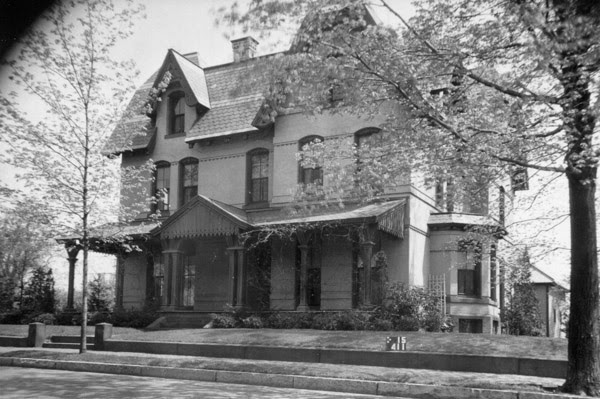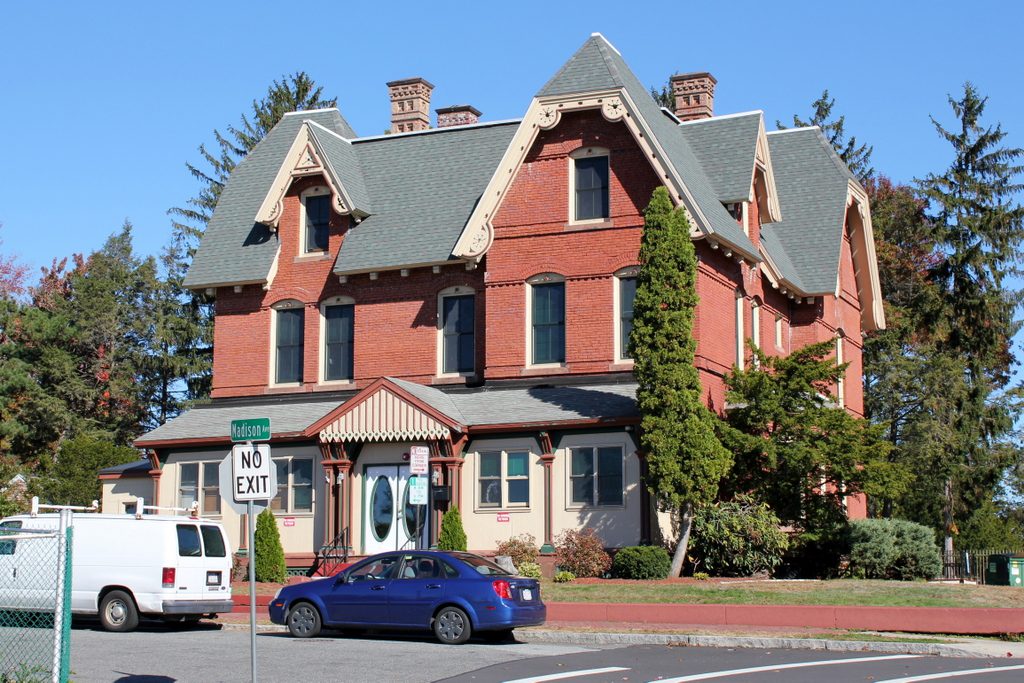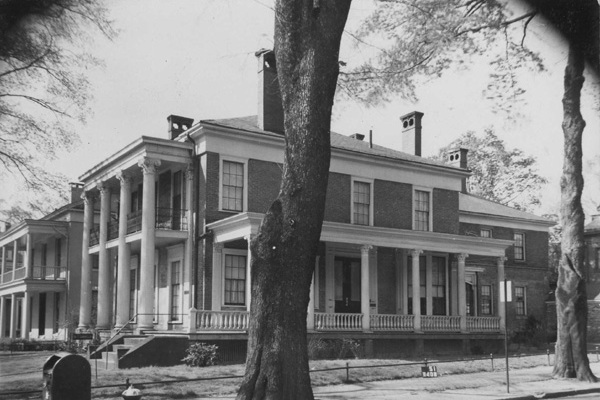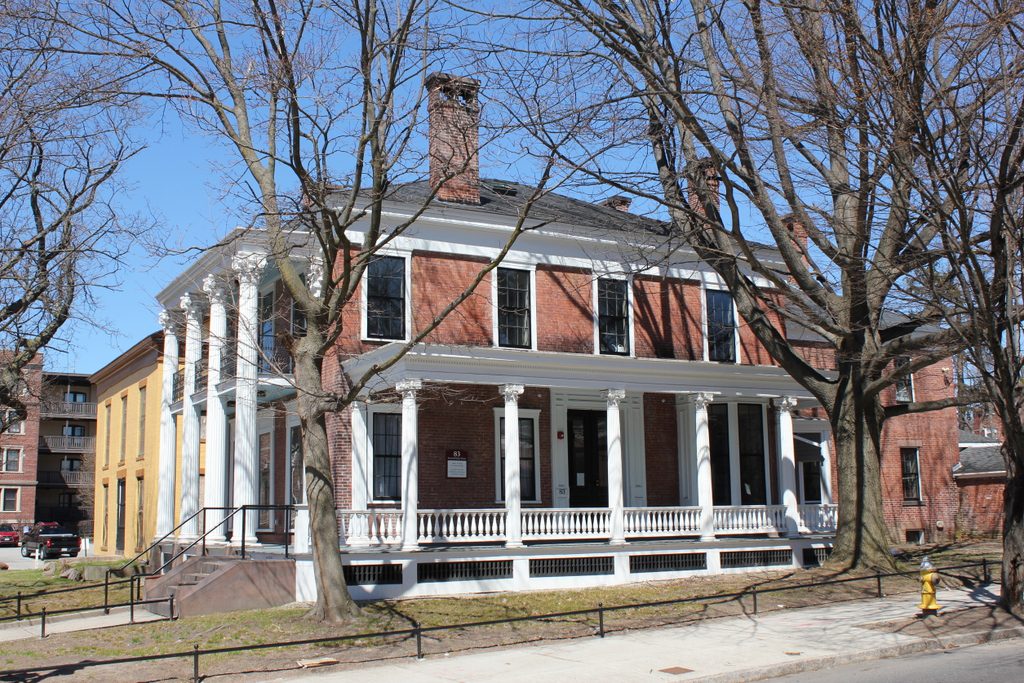The duplex at 31-33 Madison Avenue, around 1938-1939. Image courtesy of the Springfield Preservation Trust.
The building in 2016:
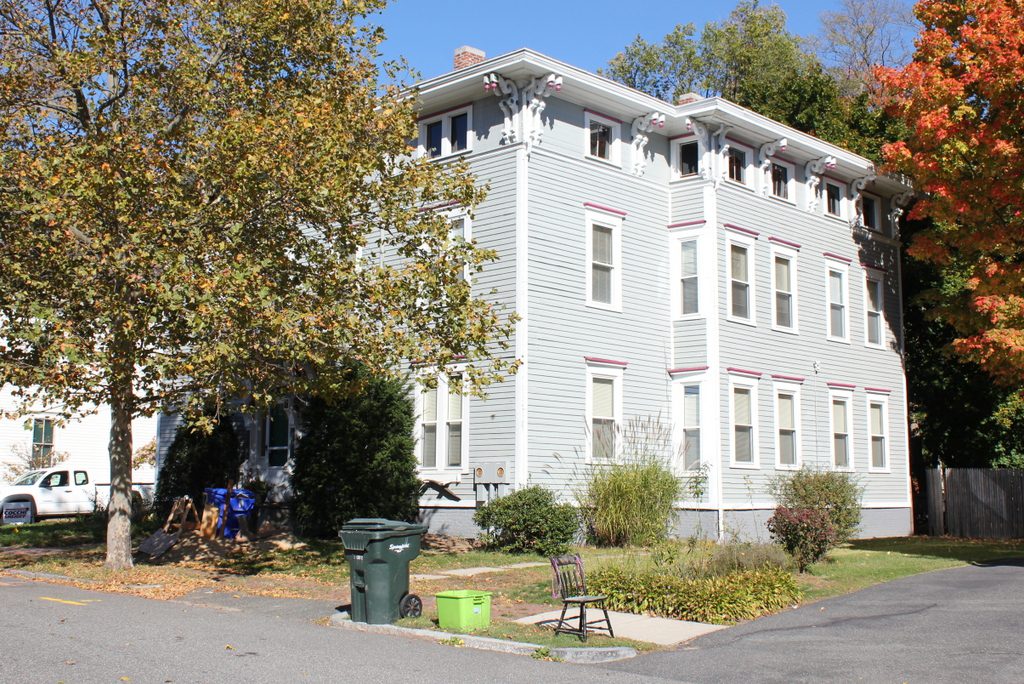
This Italianate duplex was built in 1869 for brothers Henry and Seth Avery, both of whom were merchants in the city. Henry, the older brother, was a tailor, and he lived in house number 31 on the right, with his wife Sarah. Seth, who lived on the left with his wife Elizabeth, was also involved in selling clothing, and according to the 1870 city directory he was a “Dealer in Hats, Caps, Furs, Furnishing Goods, Umbrellas, Trunks, Bags, &c.”
The two brothers lived here for the rest of their lives. Seth died in 1904, while Henry lived to be 93 years old before his death in 1912. After Seth died, the house on the left was sold to John and Mary McGillicuddy, Irish immigrants who lived here with their five children. All five children were still living here as late as the 1920 census, when the youngest was 23 years old. John lived here until his death in the 1930s, and Mary was still living here as late as the 1940 census.
After Henry’s death in 1912, the house on the right was sold to Leslie Goldthwait, a banker who lived here with his wife Florence and, by 1920, their young children Leslie, Jr. and Susan. By 1930, 78 year old widow Anna Howe was living here, along with her daughter Alison and their Irish servant, Bridie Bresnahan. They were no longer here in 1940, and the house does not appear to have been listed in that year’s census. It was likely vacant, as indicated by the “For Sale” sign in the front yard of the first photo.
Not counting the much older Sterns house, which was moved to its current site in the 1870s, this duplex is the oldest building on Madison Avenue. Nearly 150 years after it was built, its exterior remains well-preserved, with an Italianate architectural design that is relatively unusual for Springfield. Along with the rest of the street it is on the outer edge of the city’s Maple Hill Local Historic District.

